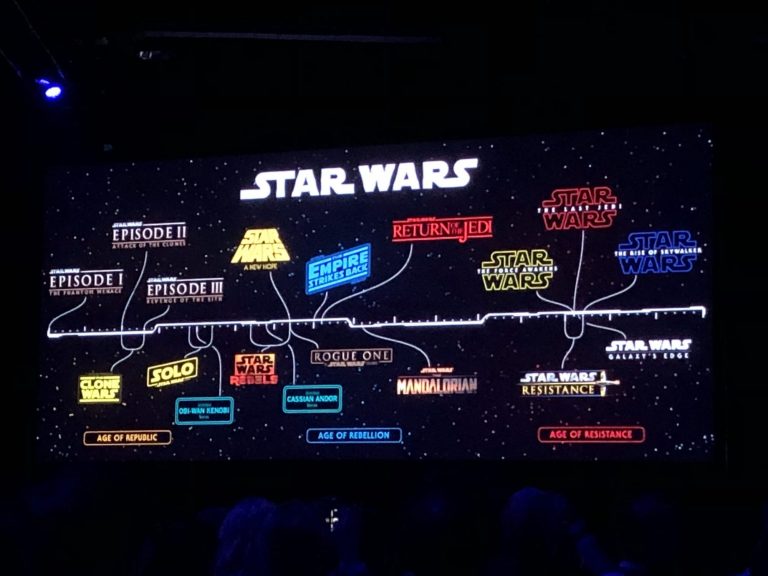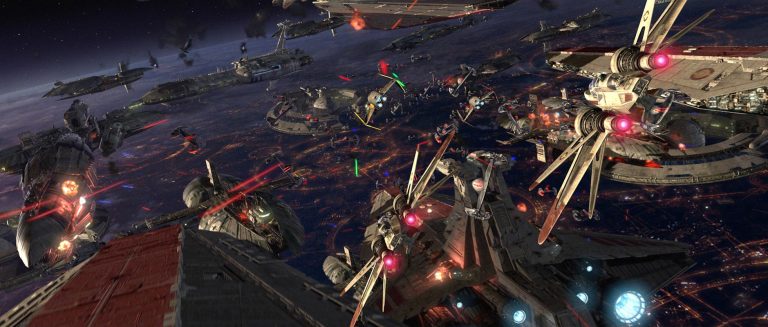What Are The Different Lightsaber Forms In Star Wars?
Lightsabers are one of the most iconic weapons in the Star Wars universe, and they are wielded by the Jedi and Sith warriors. But did you know that there are different lightsaber forms that these skilled fighters use in combat? In this article, we will explore the various lightsaber forms in Star Wars and delve into their unique techniques and characteristics.
When it comes to lightsaber combat, there is no one-size-fits-all approach. Jedi and Sith warriors have developed different forms to suit their individual fighting styles and preferences. Each form has its own set of techniques, strengths, and weaknesses, making lightsaber combat an intricate and dynamic aspect of the Star Wars saga.
One of the most well-known lightsaber forms is Form I, also known as Shii-Cho. This form is the most basic and serves as the foundation for all other forms. It focuses on wide, sweeping movements and is often used by Jedi initiates. On the other end of the spectrum, we have Form VII, also known as Juyo or Vaapad, which is an aggressive and unpredictable form that taps into the user’s inner darkness. These are just a few examples of the lightsaber forms that exist in the Star Wars universe, each contributing to the rich tapestry of lightsaber combat.
So, grab your lightsaber and get ready to dive into the world of different lightsaber forms in Star Wars. Whether you’re a Jedi, a Sith, or simply a fan of the franchise, understanding these forms will deepen your appreciation for the art of lightsaber combat and the characters who wield them. May the Force be with you as we embark on this exciting journey together!

Exploring the Different Lightsaber Forms in Star Wars
Lightsabers are iconic weapons in the Star Wars universe, wielded by Jedi Knights and Sith Lords alike. These elegant weapons of a more civilized age come in various forms, each with its own unique characteristics and fighting style. In this article, we will delve into the different lightsaber forms in Star Wars, shedding light on their origins, techniques, and notable Jedi who mastered them.
Form I: Shii-Cho – The Way of the Sarlacc
Form I, also known as Shii-Cho or the Way of the Sarlacc, is the oldest and most basic lightsaber form. Developed during the early days of the Jedi Order, it is characterized by wide, sweeping strikes and simple defense maneuvers. Shii-Cho focuses on overwhelming opponents with sheer power and aggression, making it an excellent form for beginners.
This lightsaber form is often compared to the broadsword fighting styles of ancient Earth, emphasizing strong two-handed grips and broad strokes. Jedi Masters such as Obi-Wan Kenobi and Anakin Skywalker relied on Shii-Cho during their early training, showcasing its effectiveness in close-quarters combat.
Techniques and Tips:
Shii-Cho practitioners utilize circular motions and diagonal strikes to keep opponents off balance. By maintaining a constant offensive pressure, they can overwhelm adversaries who are less skilled or experienced. However, against more advanced opponents, Shii-Cho can be predictable and easily countered.
To excel in Shii-Cho, Jedi must master the art of footwork and maintain a solid defense. By constantly adjusting their stance and positioning, they can evade attacks and create openings for counterattacks. Additionally, learning to control the flow of the battle and conserve energy is crucial, as the aggressive nature of Shii-Cho can lead to exhaustion if not managed properly.
Form II: Makashi – The Way of the Ysalamiri
Form II, known as Makashi or the Way of the Ysalamiri, is a lightsaber form that focuses on precision and finesse. Developed during the time of the Old Republic, it was primarily used by Jedi against opponents wielding conventional weapons. Makashi practitioners excel at dueling, relying on deft movements and precise strikes to overcome their adversaries.
This lightsaber form draws inspiration from classical fencing styles, with Jedi adopting elegant and graceful stances. It emphasizes precise footwork, parries, and thrusts, making it well-suited for engagements that require finesse and agility. Count Dooku, one of the most skilled duelists in the Star Wars universe, was a master of Makashi.
Techniques and Tips:
In Makashi, Jedi focus on exploiting weaknesses in their opponent’s defense and capitalizing on precise strikes. By maintaining a strong guard and fluid movements, they can redirect an opponent’s attacks with minimal effort. Makashi practitioners often aim for specific target areas, such as limbs or joints, to disable their adversaries.
To excel in Makashi, Jedi must prioritize speed and accuracy. They should practice precise footwork and movements to maintain a constant distance from their opponent, preventing them from launching effective attacks. Additionally, Makashi practitioners should be patient, waiting for the perfect moment to strike and avoiding unnecessary risks.
Form III: Soresu – The Way of the Mynock
Form III, known as Soresu or the Way of the Mynock, is a defensive lightsaber form developed in response to the rise of blaster technology. It focuses on deflecting incoming blaster bolts and weathering prolonged battles. Soresu is regarded as one of the most effective forms for survival, allowing Jedi to outlast their opponents and wait for an opportunity to strike.
This lightsaber form is characterized by tight, efficient movements and a strong defensive posture. Jedi utilizing Soresu excel at deflecting blaster bolts with their lightsabers, turning their opponents’ attacks against them. Obi-Wan Kenobi famously relied on Soresu during his duel with General Grievous, showcasing its effectiveness against multiple opponents.
Techniques and Tips:
Soresu practitioners focus on maintaining a sturdy defense while waiting for the perfect moment to counterattack. They utilize tight, controlled movements to deflect blaster bolts with precision, conserving energy and minimizing the risk of being hit. Jedi skilled in Soresu must have impeccable timing and patience, as they often engage in extended battles.
To excel in Soresu, Jedi must master the art of anticipation and spatial awareness. They should be able to predict the trajectory of blaster bolts and position themselves accordingly to deflect them. Additionally, Soresu practitioners should be adaptable, adjusting their defense to counter different opponents and combat situations.
Form IV: Ataru – The Way of the Hawk-Bat
Form IV, known as Ataru or the Way of the Hawk-Bat, is an acrobatic and highly kinetic lightsaber form. It emphasizes agility, speed, and aggressive movements, making it suitable for Jedi who prefer a more dynamic fighting style. Ataru practitioners are known for their impressive leaps, spins, and flips, incorporating the Force into their physical movements.
This lightsaber form draws inspiration from martial arts and gymnastics, with Jedi utilizing acrobatic maneuvers to confuse and overwhelm their opponents. Yoda, one of the most renowned Jedi Masters, was a master of Ataru, showcasing its effectiveness despite his diminutive size. However, Ataru can be physically demanding and may leave Jedi vulnerable to counterattacks if not properly executed.
Techniques and Tips:
Ataru practitioners rely on speed, agility, and unpredictable movements to keep their opponents off balance. They utilize acrobatic flips, spins, and jumps to create openings for attacks while avoiding incoming strikes. By incorporating the Force into their movements, they can enhance their physical abilities and execute powerful strikes.
To excel in Ataru, Jedi must possess exceptional physical fitness and reflexes. They should be able to quickly assess their surroundings and react accordingly, using their acrobatic skills to gain an advantage. Additionally, Ataru practitioners must be mindful of their energy expenditure, as the highly kinetic nature of this form can lead to exhaustion if not managed effectively.
Form V: Shien/Djem So – The Way of the Krayt Dragon
Form V, known as Shien/Djem So or the Way of the Krayt Dragon, is a lightsaber form that combines elements of both defense and offense. It is divided into two variations: Shien, which focuses on redirecting and countering attacks, and Djem So, which emphasizes powerful strikes and aggressive maneuvers. Anakin Skywalker and his Jedi apprentice, Ahsoka Tano, were skilled practitioners of Form V.
This lightsaber form draws inspiration from various martial arts, incorporating fluid movements and swift transitions between defense and offense. Form V practitioners excel at deflecting blaster bolts and launching powerful counterattacks. However, the aggressive nature of Djem So can leave Jedi vulnerable to cunning opponents who exploit openings in their attacks.
Techniques and Tips:
In Shien, Jedi focus on redirecting and countering their opponents’ attacks with precise parries and deflections. They maintain a balanced stance and fluid movements to quickly transition between defense and offense. Djem So practitioners, on the other hand, prioritize powerful strikes and aggressive movements, overwhelming their opponents with brute force.
To excel in Form V, Jedi must strike a balance between defense and offense. They should be able to seamlessly switch between Shien and Djem So techniques, adapting to different opponents and combat situations. Additionally, Form V practitioners must be mindful of their emotions, as the aggressive nature of Djem So can easily lead to the dark side of the Force.
Form VI: Niman – The Way of the Rancor
Form VI, known as Niman or the Way of the Rancor, is a lightsaber form that combines elements of all the previous forms. It is regarded as a more balanced and versatile style, allowing Jedi to adapt to a wide range of combat scenarios. Niman practitioners emphasize a holistic approach, incorporating both offensive and defensive techniques.
This lightsaber form draws inspiration from various martial arts and incorporates a mixture of wide, sweeping strikes and precise, controlled movements. Jedi skilled in Niman can switch between different forms and seamlessly integrate them into their combat style. Qui-Gon Jinn and Luke Skywalker were known for their proficiency in Form VI.
Techniques and Tips:
Niman practitioners focus on adaptability and versatility, utilizing a combination of techniques from different forms. They can seamlessly transition between offensive and defensive maneuvers, adjusting their style to suit the situation at hand. Niman emphasizes a holistic understanding of lightsaber combat, allowing Jedi to exploit their opponents’ weaknesses effectively.
To excel in Niman, Jedi must have a deep understanding of the fundamental principles of lightsaber combat. They should be able to analyze their opponents’ strengths and weaknesses and adjust their strategy accordingly. Additionally, Niman practitioners should be open-minded and willing to learn from various sources, incorporating different techniques into their repertoire.
Other Notable Lightsaber Forms
In addition to the main lightsaber forms mentioned above, there are several other notable styles that have been developed and utilized by Jedi throughout the Star Wars saga. These include:
- Juyo/Vaapad: A highly aggressive and unpredictable form developed by Mace Windu, emphasizing fluid movements and channeling the dark side of the Force.
- Sokan: A form used by Jedi Sentinels, focusing on balance between offense and defense while incorporating the use of the Force.
- Shien and Djem So: The two variations of Form V, as mentioned earlier, combining elements of defense and offense.
- Krath: A form developed by the dark side organization known as the Krath, emphasizing aggressive and brutal strikes.
Each lightsaber form brings its own unique style and techniques to the world of Star Wars. Whether it’s the aggressive and acrobatic moves of Ataru or the precise and calculated strikes of Makashi, these forms showcase the skill and artistry of lightsaber combat. From the earliest days of the Jedi Order to the modern era, lightsaber forms continue to evolve and adapt, embodying the spirit and traditions of the Force.
Key Takeaways: Different Lightsaber Forms in Star Wars
1. There are seven different lightsaber forms in Star Wars, each with its own unique style and techniques.
2. Form I, also known as Shii-Cho, is the most basic form and focuses on simple attacks and defense.
3. Form II, Makashi, is a dueling form that emphasizes precision and elegance.
4. Form III, Soresu, is a defensive form that excels at deflecting blaster shots.
5. Form IV, Ataru, is an acrobatic form that utilizes flips and jumps in combat.
Frequently Asked Questions
Curious about the different lightsaber forms in Star Wars? Look no further! Here are some commonly asked questions about lightsaber forms and their answers.
Q: What is a lightsaber form?
A: A lightsaber form, also known as a lightsaber combat style, is a specific style or technique used in lightsaber combat. There are several different forms, each with its own unique characteristics and strategies. These forms are often associated with different Jedi or Sith traditions and can reflect the personality or philosophy of the wielder.
Each lightsaber form has its own strengths and weaknesses, making them suitable for different situations and opponents. By mastering various forms, lightsaber wielders can become more versatile and effective in combat.
Q: How many lightsaber forms are there in Star Wars?
A: There are seven primary lightsaber forms recognized in the Star Wars universe. These forms are: Shii-Cho, Makashi, Soresu, Ataru, Shien/Djem So, Niman, and Juyo/Vaapad. Each form has its own principles and techniques, allowing Jedi and Sith to adapt to different combat scenarios.
It’s important to note that lightsaber forms are not restricted to only Jedi or Sith. Other Force-sensitive individuals, such as Dark Jedi or even non-Force users, can also adopt and master these forms.
Q: What are some notable lightsaber wielders associated with each form?
A: Each lightsaber form is often associated with certain Jedi or Sith who have become renowned for their mastery of that particular form. Here are a few notable lightsaber wielders associated with each form:
– Shii-Cho: Obi-Wan Kenobi, Anakin Skywalker
– Makashi: Count Dooku, Asajj Ventress
– Soresu: Obi-Wan Kenobi, Yoda
– Ataru: Yoda, Qui-Gon Jinn
– Shien/Djem So: Anakin Skywalker, Darth Vader
– Niman: Mace Windu, Ahsoka Tano
– Juyo/Vaapad: Mace Windu, Depa Billaba
Q: How do lightsaber forms differ from each other?
A: Lightsaber forms differ from each other in terms of their principles, techniques, and focus. For example, Shii-Cho, the first form, emphasizes basic strikes and defenses, making it suitable for beginners. On the other hand, Juyo/Vaapad, the seventh form, is a highly aggressive and unpredictable form that taps into the user’s inner darkness.
Some forms prioritize defense and evasion, while others focus on offense and acrobatics. Additionally, certain forms may be more effective against specific opponents or combat scenarios. Jedi and Sith often choose a form that aligns with their natural tendencies or that complements their fighting style.
Q: Can lightsaber forms be combined or customized?
A: Yes, lightsaber forms can be combined or customized to suit the preferences and abilities of the wielder. Some Jedi or Sith may develop their own hybrid forms that incorporate elements from multiple traditional forms. This allows them to create a unique fighting style that maximizes their strengths and minimizes their weaknesses.
Furthermore, lightsaber forms can evolve over time as new techniques are developed or old ones are refined. Jedi and Sith may also adapt their chosen form to better counter specific opponents or combat situations. Flexibility and adaptability are key to becoming a skilled lightsaber duelist.
The 7 Classic Lightsaber Combat Forms EXPLAINED
Final Summary: The Many Paths of Lightsaber Mastery
As we delve into the captivating world of lightsabers in Star Wars, we uncover a wide array of lightsaber forms that showcase the diverse combat styles of the Jedi and Sith. From the elegant and precise Form II: Makashi to the aggressive and powerful Form VII: Juyo/Vaapad, each lightsaber form offers a unique approach to combat.
Throughout the Star Wars saga, we witness the mastery of lightsaber forms by iconic characters such as Obi-Wan Kenobi, Darth Vader, and Rey. These forms not only serve as a means of defense and offense but also reflect the personality and mindset of the wielder. Whether you prefer the finesse of Form III: Soresu or the acrobatic flair of Form IV: Ataru, there is a lightsaber form to suit every Jedi or Sith’s individual style.
In conclusion, the different lightsaber forms in Star Wars provide an intriguing glimpse into the rich lore and skillful art of lightsaber combat. From the disciplined Form V: Shien/Djem So to the adaptable Form VI: Niman, each form brings its own strengths and weaknesses to the battlefield. So, whether you’re a Jedi Knight, a Sith Lord, or simply a fan of the Star Wars universe, exploring the intricacies of lightsaber forms adds an extra layer of excitement and depth to this beloved franchise. May the Force be with you as you embark on your own lightsaber journey!






